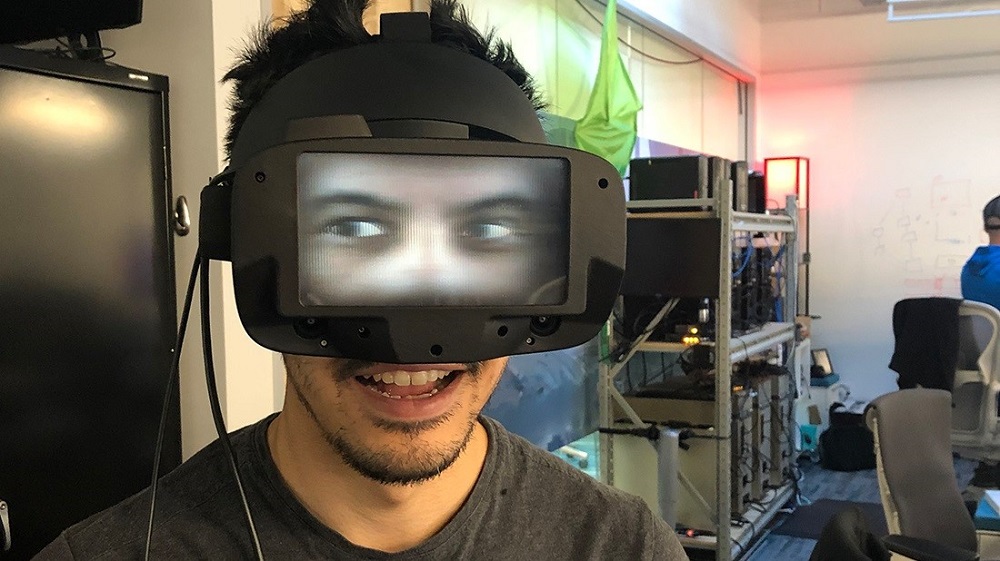But before we get to that, it’s probably better to understand normal passthrough VR first. And it is simply something that lets the VR headset wearer see the real world while they have the headset on. This turns it into a sort of pseudo-augmented reality (AR). The idea of reverse passthrough VR is so that, just like the person wearing the headset can see outside of the headset, bystanders can see the wearer’s eyes.
This is done by having a 3D display on the outside of the VR headset, the Oculus Rift S in this case. Eye-tracking cameras are used to capture the eyes, which is then projected to the external display. An extra twist makes it so that your eyes are only projected when you’ve tuned out of VR and looking at your surroundings. When you dive back into the world of VR, your eye projectors turn off. Overall, it’s a novel idea, and maybe a fun one for Facebook researchers. But there’s not only no practical use for it, but the projected eyes are really the definition of uncanny valley. Between the choice of that, and not being able to see the wearer’s eyes. I’d argue that the latter is not only less uncomfortable, but also cheaper since it requires no additional research. (Source: Facebook [1], [2] via The Verge)
